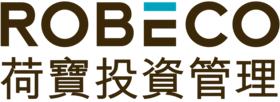


The pros and cons of ESG ratings for investment funds
Monthly column from Global Equities on sustainability investing. Head of ESG integration Masja Zandbergen questions whether ESG ‘snapshot’ scores give the full picture about a mutual fund’s sustainability.
As responsible investment is growing and more and more investors are incorporating sustainability or ESG – whatever you want to call it – into their investments, the need arises to separate the wheat from the chaff. The good from the not so good. To fulfil this need, many market participants are coming up with solutions to measure the ESG profiles of investment funds.
This approach usually starts with measuring the ESG scores of the portfolio holdings and comparing them to peers. Sometimes this is supplemented by including the past controversies of the companies owned, along with their carbon footprints. The end result is a score or rating which provides some insight into how the companies that are currently held in a portfolio score on sustainability.
The good thing about these ratings is that they can be produced at relatively low cost for relatively large numbers of funds. The best thing is that they raise ESG awareness. The question remaining, however, is whether they actually achieve the desired outcome.
Taking a snapshot
The point is that investing means looking forward, but these ratings only provide a snapshot of the current situation. If there is no clear sustainability investment policy for the fund, then an investor can buy into a portfolio that is highly ranked, only to discover after a few months or years that the score has completely changed.
So, these methodologies are merely a starting point that is far from perfect. I would suggest a few points that would really improve these ratings:
Adjust for biases in the universe. For example, investing in large cap European stocks would really help your rating right now.
Don’t make a picture, but be more forward looking. Take into account the investment process and the engagement efforts of an asset manager. This analysis is more time consuming and costs more, but is of much higher quality.
Focus on financial materiality in scores, but also incorporate a top-down view of sectors and issues. For example, how does a worst-in-class media company compare to a worst-in-class mining company? From both a societal and financial perspective, the impact of the latter is much bigger.
Impact measurement
By only analyzing the portfolio outcome, you are starting at the end. Instead, the investment approach and process should be the starting point of the analysis. Let’s not forget what we are trying to achieve here: if it is better investment returns or lower risk by using ESG information, then this is what we should measure.
If making a positive social and environmental impact, then impact measurement should be used instead. Mixing both investment goals into a one-size-fits-all approach is not the best idea, and certainly not when it distracts from the real hard work – namely analyzing the impact of sustainable development on a company’s business models and prospects, and discussing the way forward with them.
了解最新的可持續性市場觀點
訂閱我們的電子報,探索塑造可持續投資的趨勢。
Important information
The contents of this document have not been reviewed by the Securities and Futures Commission ("SFC") in Hong Kong. If you are in any doubt about any of the contents of this document, you should obtain independent professional advice. This document has been distributed by Robeco Hong Kong Limited (‘Robeco’). Robeco is regulated by the SFC in Hong Kong. This document has been prepared on a confidential basis solely for the recipient and is for information purposes only. Any reproduction or distribution of this documentation, in whole or in part, or the disclosure of its contents, without the prior written consent of Robeco, is prohibited. By accepting this documentation, the recipient agrees to the foregoing This document is intended to provide the reader with information on Robeco’s specific capabilities, but does not constitute a recommendation to buy or sell certain securities or investment products. Investment decisions should only be based on the relevant prospectus and on thorough financial, fiscal and legal advice. Please refer to the relevant offering documents for details including the risk factors before making any investment decisions. The contents of this document are based upon sources of information believed to be reliable. This document is not intended for distribution to or use by any person or entity in any jurisdiction or country where such distribution or use would be contrary to local law or regulation. Investment Involves risks. Historical returns are provided for illustrative purposes only and do not necessarily reflect Robeco’s expectations for the future. The value of your investments may fluctuate. Past performance is no indication of current or future performance.




















